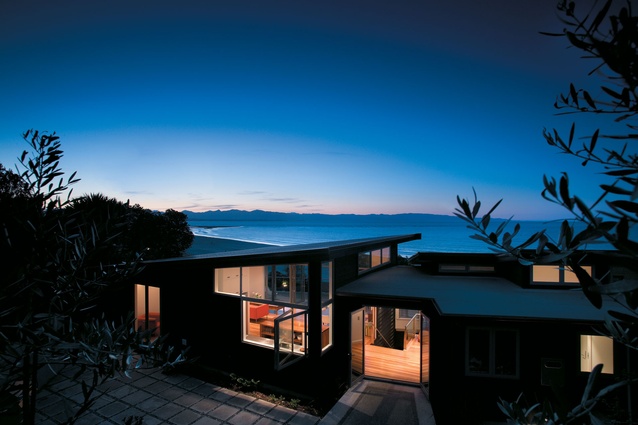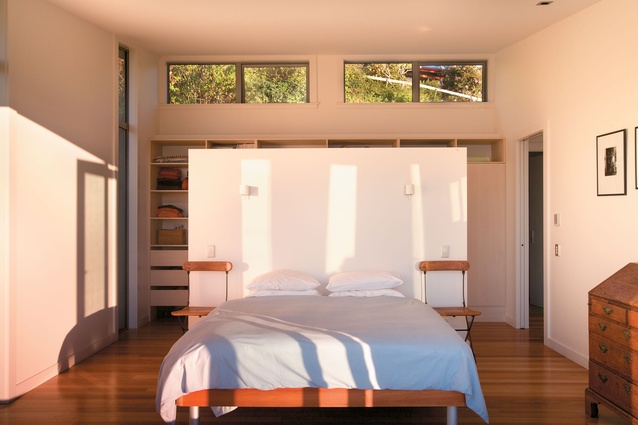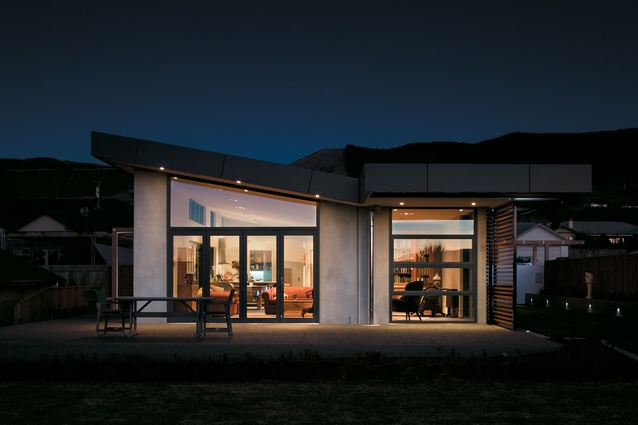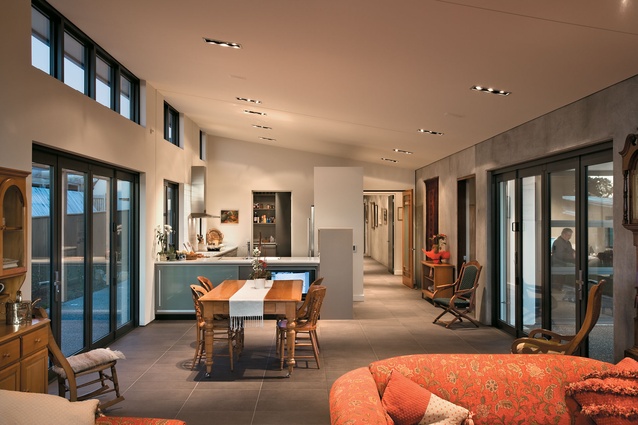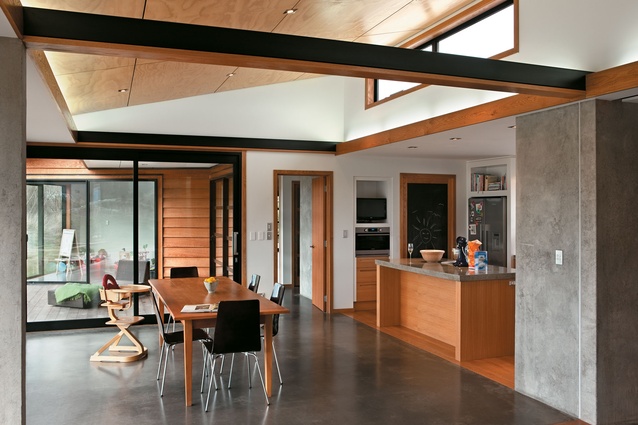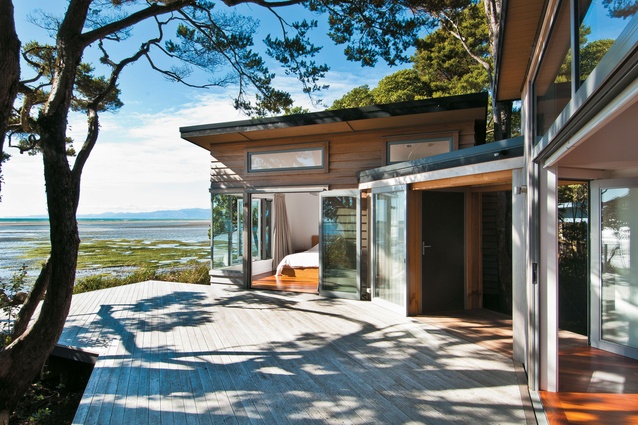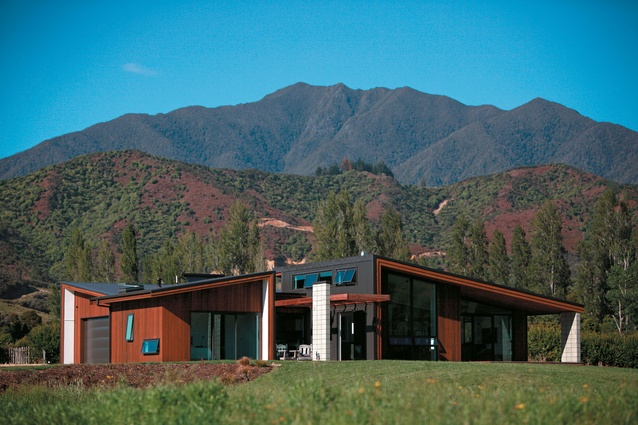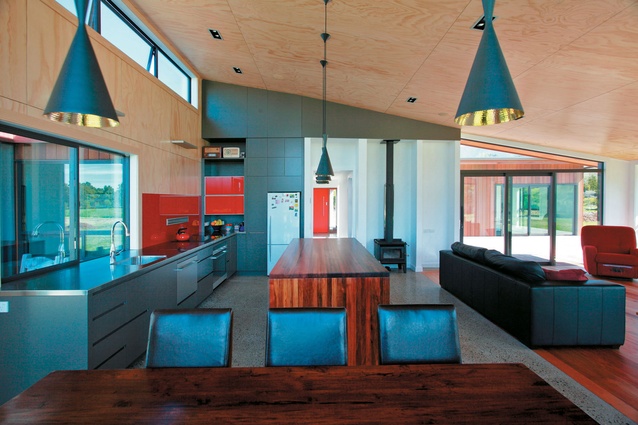At work with Arthouse Architecture
Founding member of Arthouse Architecture David Wallace and director Jorgen Andersen talk about their shared passion for architecture.
Were both of you born and raised in Nelson?
DW: No I was born and raised in Hamilton.
JA: I’m a Christchurch lad. Born and raised down there.
What prompted the move to Nelson?
DW: After studying in Auckland and a brief stint in Palmerston North I travelled around the US and Europe and then worked in London for a couple of years in the early 80s, before coming to Nelson after the OE.
JA: It was after I finished architecture school in Wellington. I was ready for a change of scale really after spending five years in the city and was lucky enough to get a job in Nelson for another architect. Thought I’d spend a year here doing that before moving on; that was eight or nine years ago.
David, how was it being a Kiwi kid working in London in the 80s?
It was a fantastic experience; bigger projects on an entirely different scale and much larger office of course too. I haven’t been back to London since but I’d love to because there have been some amazing buildings built since then.
Was it a bit of an anticlimax moving from London to Nelson?
Not at all. When I came back to New Zealand I didn’t feel the need to be in a big city and I was looking for more of a lifestyle fit, probably the same reason why a lot of people come to Nelson. My partner was on a course down here and there happened to be a job going with Dukker and West and I got it and stayed.
Did you know from an early age that you wanted to be an architect?
DW: Yes, I decided in my early teens that I wanted to be an architect. I loved drawing plans and designing houses. I don’t think I understood what an architect was at that stage, but yes, it was an early decision.
JA: I didn’t. I was always interested but I actually did a lot of design and photography at school and I originally applied to the Christchurch Polytech to do a Bachelor of Design and Visual Communications but I didn’t get in. Architecture was next on my list. Looking back now, I’m pretty well suited to it, so it worked out well.
So David, how would you characterise your personal architectural philosophy?
Fundamentally, I think it’s about relationships. It’s about developing a relationship with the client to ensure the design actually meets their needs and aspirations. It’s ensuring the design has a relationship with the land; It’s very important to me that it responds to the site and with the environment through the use of natural materials and by minimising the overall impact of the building. Then, lastly, it’s very much about the relationship within the office, as well as the wider group of consultants and the building team.
And is that a philosophy that you instil company-wide?
Yes, it is an integral part of the Arthouse philosophy but I also think that we’ve got a really experienced team of architects at Arthouse Architecture and so everyone probably responds to that philosophy slightly differently, which I think is a good and healthy thing really. We’re definitely not a practice where there’s just one design architect and everyone follows along, so there would be different interpretations of that philosophy amongst the practice but there is that underlying attitude through it of relationships.
Jorgen, as a Christchurch lad the effect of the earthquakes must be something near and dear to your heart. Putting aside the tragedy of that situation, are we faced with the architectural opportunity of a lifetime to do something really outstanding with Christchurch, in a modern context?
Absolutely, I think it’s an amazing architectural opportunity. There’s been a bit in the local media regarding the public backlash against the speedy, box-type solutions of some of the buildings that have been going up. I think there’s definitely an opportunity to get creative people around a table and come up with a variety of solutions. It’s a very complex problem and obviously there isn’t an easy solution but I think people across the board need to be aware that what’s being created now is going to help determine the success, or otherwise, of the city in the future. So yes, it’s an amazing opportunity and, I think, one for which its importance cannot be overstated.
You mentioned a public backlash to the attempted speedy resolution of some issues; does that mean we’re likely to see a sacrifice of form for function?
To a certain extent, yes. It’s inevitable that there are going to be some things that have to be built quickly and cheaply and there’s always going to be a place for that but I don’t think it’s a sweeping solution for everything in Christchurch. I think you can still build quickly and cheaply and have character in something. It doesn’t have to be quite so brutally planned. It doesn’t take a lot just to add a layer to a building to create street-level interest.
So then, what are your feelings, either personally or professionally speaking, about the ‘Cardboard Cathedral’ as it’s being termed?
I think it’s fantastic. I studied Shigeru Ban at architecture school and am aware of a lot of the projects that he’s carried out around the world. The cathedral is a great example, a classic opportunity to do something different and it’s something that I think people will come to Christchurch to see and that’s what we should be promoting.
If you were to design a building for Christchurch, would you do something civic or residential? How would you like your architectural input to take form?
I suppose, because I grew up in suburban Christchurch that’s what I identify with and having been involved in master planning and urban design that’s what I would look to do. I think a lot of what people coming from affected properties are going to lose is that sense of community. To be able to work at a macro level to create new neighbourhoods, as well as at a micro level coming up with individual solutions for properties, to create strong and safe communities again, that would be pretty amazing.
Okay, let’s take a step back from the heavy topics and focus a bit more on some personal insight. David, do you still have fond memories of your first project?
Thinking about what I’d term my first real project, where I felt I had the control of things, yes. It was when I was working with Dukker and West and we built our own house; I certainly have very fond memories of that house. It was a great learning experience that every young architect should go through I think, designing and building their own house.
So you would definitely recommend having yourself for a client?
Yes. It’s a great process to go through – a very levelling or grounding process to sort through some of those issues for your own house. Also, it’s fun to experiment and push it further than you would with another client.
What is it about really good architecture that gets your blood racing?
DW: I think it’s when you walk into a building and the combination of space and light and feeling within hits you. It’s something Pip Cheshire has talked about. It’s that feeling you get, that’s not present in the glossy magazine photo, but only when you actually walk into the building and you can experience it; it has an emotional impact on you – that’s when it’s fantastic.
For the full interview, pick up a copy of the September issue of Houses.


